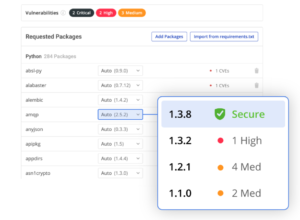

In order to do that, open up your Python IDLE, and check the message on top.

First, you need to check if your Python is 32-bit or 64-bit. If for some reason your Python does not convert the newline marker to \n, you can use the 'rU' switch instead of 'r' when opening a file for reading.įans of MS: unfortunately, things are a bit complicated.When you write out to a file, Python will replace \n with the OS-appropriate newline marker.Regardless of your OS, within Python all newline types are converted to \n.Python, on any OS, represents the end-of-line as \n, but it has what's called universal newline support. But you can use other text viewers such as Wordpad, Notepad++, and even Chrome and Firefox browsers, and they will display the unix-style line breaks just fine. Old Mac OS up to 9: \r ("carriage return")īecause of this discrepancy, if you open a unix-style text file in Windows with Notepad, you will see the text in one line.Unix, Linux, Mac OS X: \n (called "line feed").How do I work with CWD (current working directory) in Python shell?įirst, you must understand that the end-of-line (EOL, also called "line break") is encoded differently depending on the OS:.A final note: if you are working in IDLE, bear in mind that executing a script changes your IDLE shell's CWD to your script's directory. See this screen shot and and the next FAQ for how to work with your CWD setting in Python shell. (Not recommended, since your shell's CWD may change.) Change your CWD to the file's directory, or.In your shell, the initial CWD setting varies by system. Therefore, you can refer to a file in a script by its name only provided that the file and the script are in the same directory. When you execute your script, your CWD is set to the directory where your script is. To complicate the matter, your Python has different initial CWD settings depending on whether you are working with a Python script or in a shell environment. Basically, referring to a file without specifying its path ( 'myfile.txt') works only when the file is in your CWD. The concept of Current Working Directory (CWD) is crucial here. How do I find its full file path and name? I have this file sitting in my Desktop/My Documents.That way, everything in the string is interpreted as a literal character, and you don't have to escape every backslash. Alternatively, you can prefix the entire file name string with the rawstring marker "r": r'C:\Users\narae\Desktop\foo.txt'.If using backslash, because it is a special character in Python, you must remember to escape every instance: 'C:\\Users.Therefore, you can refer to the file as 'C:/Users/narae/Desktop/foo.txt'. Python simply lets you use OS-X/Linux style slashes "/" even in Windows.In Python, Windows files can be referred to in multiple ways: They start with the disk label "C:", and backslashes are used to separate directories. Windows file paths look like this: C:\Users\narae\Desktop\foo.txt. They start from the root "/", and slashes are used to separate directories. OS-X/Linux file paths look like this: /Users/narae/Desktop/foo.txt.


 0 kommentar(er)
0 kommentar(er)
